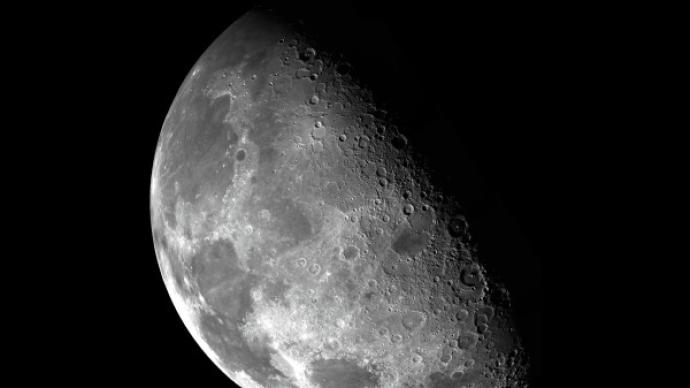

Permanently shadowed areas on the moon are expected to be "illuminated".
An international team of researchers led by ETH Zurich in Switzerland used artificial intelligence algorithms to observe permanently shadowed regions on the moon. The AI promises to "illuminate" permanently shaded areas, especially those that natural sunlight cannot reach despite the rotation. The research, published recently in Geophysical Research Letters, is also included in NASA's Artemis 1 mission plan and could help identify landing sites for its future lunar landings .
According to the Australian journal Science Alert, it is a common misconception that the moon has a "dark" side. Because the moon rotates, the moon also has day and night, but only one side of the moon faces the earth, and observers on earth cannot see its "dark" side. However, there are also areas that never receive any light: at high latitudes and at the lunar poles, some deep craters and craters have "high walls" that protect the crater floor from intense solar radiation.
Researchers believe that there may be many undiscovered things in these mysterious craters on the moon, such as "water."
With the help of NASA's Lunar Reconnaissance Orbiter (LRO), researchers managed to analyze the inside of the crater. Enter a machine-learning algorithm called HORUS that cleans up the noise in LRO data and reveals objects lurking in the moon's shadow. The team used HORUS to image 44 permanently shadowed areas over 40 meters in diameter in the Project Artemis exploration area.
The Artemis mission spacesuit is currently used for only two hours in the frigid crater shadow, the researchers said, and the new study will help plan routes to explore the permanently shadowed region of the moon, allowing astronauts and robots to maximize their time.
The researchers also point out that the lunar south pole region is so fascinating because of the moon's axial tilt, with the sun hovering near its horizon, and the crater's subsidence ground never seeing sunlight and perpetually in shadow. As a result, these shadowed regions are even cooler than Pluto's surface, with temperatures ranging from -170°C to -240°C, close to absolute zero.
Valentin Bickel from TU Zurich, who led the study, said: "There is no evidence that there is pure ice on the surface of the shadow zone, which means that the ice must have been mixed with the lunar soil or be present on the moon. below the surface."
So far, the team has investigated more than six potential Moon landing sites for the Artemis program. The results of this study could have direct implications for future missions.
The robotic mission will collect and analyze the first soil samples from the moon's murky south pole before astronauts land on the moon in spring 2023.
(Original title "Artificial intelligence algorithm "illuminates" the permanently shadowed area of the moon will help the Artemis plan to determine the moon landing site")



Awesome postings, Appreciate it. casino en ligne Thanks a lot, I appreciate it. casino en ligne Information well regarded.. casino en ligne You revealed it superbly. casino en ligne You revealed this terrifically! casino en ligne Regards. Quite a lot of information. casino en ligne Nicely put, With thanks. casino en ligne Lovely write ups, Thanks a lot! casino en ligne Thank you, An abundance of tips. casino en ligne Thanks a lot! Plenty of posts! casino en ligne